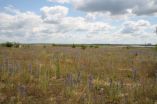(Press-News.org) The gap in flu vaccination rates between elderly whites, African-Americans and Hispanics is amplified when vaccine supply is limited or delayed. That is the conclusion of a study out today in the American Journal of Preventive Medicine.
The study found that disparities in seasonal influenza vaccination rates between the groups grew by as much as 7 percentage points in years when there were problems with vaccine supply. By contrast, the gap narrowed by as much as 11 percentage points during years when the supply was more timely and abundant.
"There is a strong association between influenza vaccine supply and the gap in vaccination rates between racial and ethnic groups," said Byung-Kwang Yoo, M.D., Ph.D., an assistant professor in the Department of Community and Preventive Medicine at University of Rochester Medical Center and the lead author of the study. "These disparities are aggravated when vaccine supply is delayed or decreased."
Disparities in immunization rates represent a critical and persistent public health challenge. These discrepancies have significant public health consequences; influenza is one of the leading causes of death among people 65 and older. Nationwide, complications associated with influenza result in 36,000 deaths each year and over 120,000 hospitalizations.
Using data from the Medicare Current Beneficiary Survey, which consists of claims data and survey results of individual Medicare recipients, the study looked at seasonal influenza vaccination rates from 2000 to 2005. The data was broken into four "periods" consisting of two concurrent flu seasons during which the same group of individuals was followed for each period. For example, the same group of respondents was followed for the 2000-2001 and 2001-2002 vaccine seasons.
This method allowed researchers to compare individual activity during years in which vaccine supply fluctuated. The 2000-2001 and 2004-2005 seasons where characterized by severe vaccine shortages, 2001-2002 and 2003-2004 saw moderate shortages, and there were no supply problems during the 2002-2003 season.
Overall vaccinate rates among non-Hispanic whites ranged from 71 to 78 percent during the study period, significantly higher than African-American (43-63 percent). Total vaccination rates were also lowerer among Hispanics which the study broke into English and Spanish speaking groups depending upon the language used to respond to the survey. Vaccination rates for English speaking Hispanics were 58-75 percent and the Spanish speaking group was 31-53 percent, the lowest among the groups studied.
In years when there were problems with vaccine supply, the gap in vaccination rates between whites and the other groups jumped by 2 to 7 percentage points, depending upon the severity of the shortage. When flu seasons with supply problems were followed by seasons with adequate vaccine supply, the gap between the groups would narrow by 2 to 11 percentage points.
The authors speculate that the sharper decline in vaccination rates among minorities is attributed to a number of factors including more pronounced vaccine shortages among providers in underserved communities and, in the case of Spanish-speaking populations, language barriers.
The authors recommend a more concerted effort to ensure clinics that serve vulnerable populations are prioritized for vaccine supply and that the government to help mitigate the financial risk for these providers by covering the cost of purchasing the vaccines. They also recommend more broad-based and multilingual communication and outreach efforts.
INFORMATION:
The study's other co-authors include Megumi Kasajima, Charles Phelps, Ph.D., Kevin Fiscella, M.D., M.P.H., Nancy M. Bennett, M.D., M.S., and Peter Szilagyi, M.D., M.P.H., all with the University of Rochester. The study was funded by the National Institute of Allergy and Infectious Diseases.
END
Personality is not just a feature unique to humans and pets. Scientists at the University of Gothenburg (Sweden) have revealed that also brown trout have individual characters and show different personalities.
Researcher Bart Adriaenssens from the Department of Zoology at the University of Gothenburg has for many years studied the behaviour of juvenile trout from watercourses on the west coast of Sweden.
"My results show that it are not just humans and other mammals that exhibit personality. Also brown trout differ among each other in their level of aggression and react ...
Monthly blood transfusions combined with daily medication to remove the resulting excess iron remains the best approach for reducing the risk of recurrent strokes in young patients with sickle cell anemia, according to a preliminary analysis of a multicenter trial that includes St. Jude Children's Research Hospital.
The study compared the efficacy of two treatments for the potentially life-threatening problem of iron overload caused by chronic transfusion therapy. The transfusions are used to guard against additional strokes in young sickle cell anemia patients. The trial, ...
An international team of researchers led by the University of East Anglia (UEA) have developed a new kind of endoscope to aid the early detection and diagnosis of inflammatory bowel disease.
The Confocal Laser Endomicroscope (CLE) contains a powerful microscope which allows clinicians to view the bacteria that are thought to trigger diseases of the bowel such as Crohn's disease and ulcerative colitis.
"Bacteria within the wall of the gut are already believed to play an important role in the development of inflammatory bowel disease and we now have a powerful new tool ...
Quebec City, December 6, 2010—Researchers at Université Laval, in collaboration with Nova Scotia Agricultural College, have discovered what causes Christmas tree needles to drop off, and how to double the lifespan of Christmas trees in homes. The authors presented their findings in a recent issue of the scientific journal Trees.
The researchers have identified a plant hormone—ethylene—responsible for needle loss in balsam fir. They made the discovery by placing fir branches in containers of water inside a growth chamber. After ten days the branches began to produce ethylene ...
Brand named hotels fare better than independently operated properties in economic downturns, according to a team of international researchers.
A study of the performance of hotels during both economic recessions and expansions indicates that brand named hotels are more profitable than independent hotels under all economic conditions, but the difference is particularly significant during recessions, said John O'Neill, associate professor of hospitality management, Penn State.
"There has been a lot of debate in the hotel industry about the advantages of brand affiliation ...
CHAMPAIGN, Ill. — Good news for control freaks! New research confirms that having some authority over how one takes in new information significantly enhances one's ability to remember it. The study, in the journal Nature Neuroscience, also offers a first look at the network of brain structures that contribute to this phenomenon.
"Having active control over a learning situation is very powerful and we're beginning to understand why," said University of Illinois psychology and Beckman Institute professor Neal Cohen, who led the study with postdoctoral researcher Joel Voss. ...
COLLEGE STATION — A team of Texas AgriLife Research engineers has developed a way to cut by as much as half the amount of irradiation needed to kill 99.999 percent of salmonella, E. coli and other pathogens on fresh produce.
By packing produce in a Mylar bag filled with pure oxygen, Dr. Carmen Gomes, AgriLife Research food safety engineer, and her colleagues found they could significantly reduce the amount of radiation needed to kill those pathogens. Reducing the amount of radiation is not so much a safety measure as it is a way to preserve quality of the produce, she ...
PITTSBURGH—Computer-related technology is increasingly driving the U.S. economy, yet computer science education is scant in most American elementary and secondary school classrooms and the number of introductory and Advanced Placement courses in computer science has actually declined in the last five years, according to a report released this fall.
"Some states and some schools are offering some really excellent courses," said Mark Stehlik, co-author of the report, "Running on Empty: The Failure to Teach K-12 Computer Science in the Digital Age," http://www.acm.org/runningonempty/. ...
How do ecosystems develop? No one really knows, yet. There is however one project, unique in the world, seeking to answer this question. In a former open-pit coal mining area in Brandenburg, Germany, a surface of six hectares was partitioned off and then left to its own resources. Scientists from the Technische Universitaet Muenchen (TUM), in collaboration with researchers from other institutions, are studying the development of soil, flora, and fauna there. With this research they aim to establish the factors that have a particularly strong influence on developing ecosystems.
Young ...
CHICAGO --- Post-traumatic stress syndrome – when a severely stressful event triggers exaggerated and chronic fear – affects nearly 8 million people in the United States and is hard to treat. In a preclinical study, Northwestern Medicine scientists have for the first time identified the molecular cause of the debilitating condition and prevented it from occurring by injecting calming drugs into the brain within five hours of a traumatic event.
Northwestern researchers discovered the brain becomes overly stimulated after a traumatic event causes an ongoing, frenzied ...



